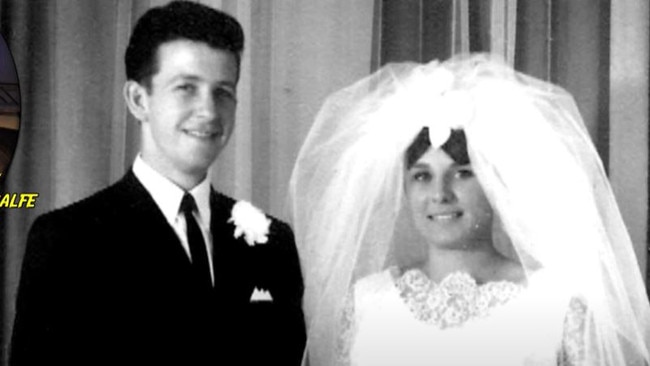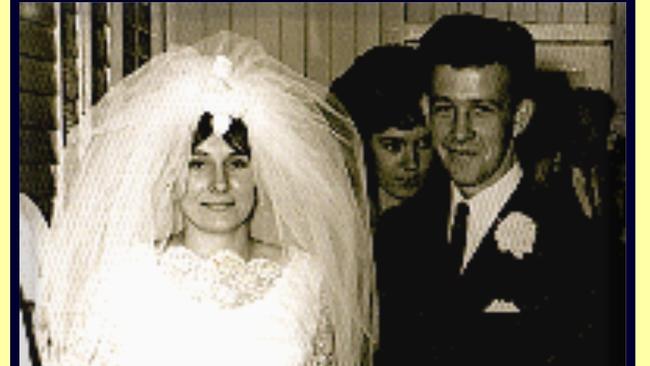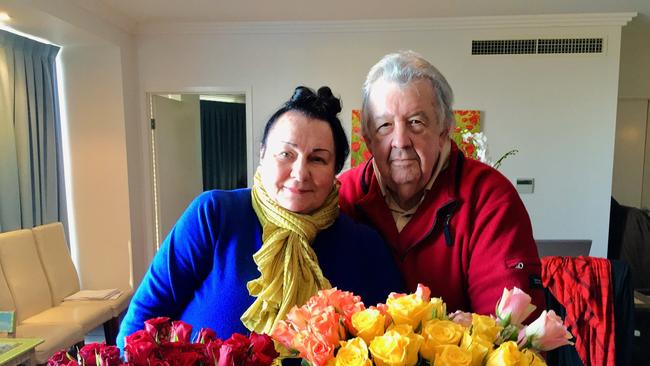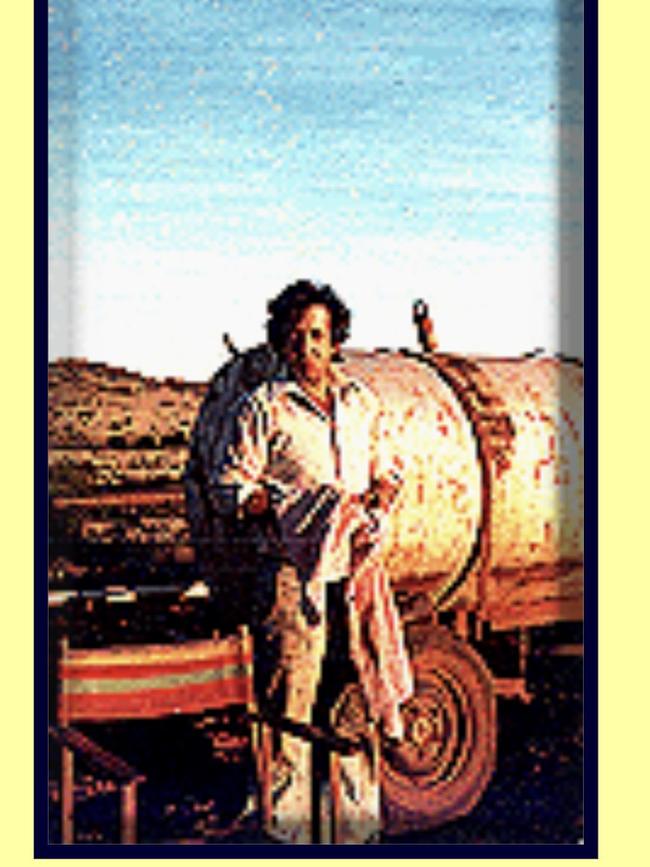Introducing The Missing $49 Million – news.com.au’s first ever eight-part investigative podcast series.
“Quite frankly, Mr Metcalfe is one of the greatest conmen to have resided in north Queensland.”
That was the scathing way a politician described Alan Metcalfe in 1984, in an official parliamentary note dug up 40 years later.
The Aussie businessman is back in the spotlight after he went on to part $49 million from hundreds of hopeful mum and dad investors through a scheme he was running, then died suddenly, taking the secret of the missing money to the grave with him.
Although he pitched himself as a successful “techpreneur”, he was far from it, with a prolific past of fraud, which he had kept hidden for 50 years – until now.
Metcalfe’s earliest recorded con dated back to the 1960s and warnings were put out about him in the 1980s, while the government was also rumoured to be investigating him.
But by the time he was selling his tech idea to investors, in the 2000s until his death in 2017, all these references had either been buried, wiped or lost in the passage of time.
And, to all intents and purposes, for 600 people, Metcalfe was a man who was offering them the opportunity of a lifetime.
Metcalfe ran schemes as a fraudster, a failed businessman and a tax dodger for 50 years that went largely undetected.
Many investors believed they had no reason to doubt him, as people they trusted – friends and family – were telling them about the investment opportunity.
But even for those who did try to look into his past, most of it wasn’t easy to find, either.
News.com.au has launched The Missing $49 Million, our first ever multi-part investigative podcast series.
Lots of money has gone missing, no one seems to know where it is and I’m setting out to find it.
A new episode is coming out every week. Listen wherever you get your podcasts.
You can listen to more of Alan Metcalfe’s past in episode two of The Missing $49 Million, Genesis.
Available on Spotify here.
Available on Apple Podcasts here.
Do you know more? Get in touch | alex.turner-cohen@news.com.au
Metcalfe convinced investors he had found the secret to artificial intelligence while reading the Bible, and that his company would be “bigger than Google”.
Those who knew him can’t say for sure whether he was a con artist or a visionary, but one thing is certain – he was one hell of a salesman.
Investigative Channel 9 journalist David Richardson briefly looked into Metcalfe’s past 10 years ago when his friends began investing in Metcalfe’s project, Safe Worlds.
“He just seemed to be this guy who wandered around in a technicolor dreamcoat,” Richardson said. “And every colour was some job that he’d done.
“It just struck me as being that he’d never stayed in one place and he was more of a salesman.”
So perhaps it’s not that surprising, then, to discover that Metcalfe actually got his start as a salesman at a remote town in Australia’s outback.
Growing up in Cairns in Queensland’s tropical north, he moved to Mt Isa because, in his own words, “there was good money to be made” there, where he landed a job as a life insurance salesman for AMP.
His apparent silver tongue came in handy, as “he broke all sales records”, according to his wife Mary Metcalfe at his eulogy. He earned the coveted title of Australasia’s top salesman from 1967-1969, writing more than $7.5 million in insurance policies.
But someone who worked with him, Gary Avis, 80, doesn’t see how.
“He was nowhere near their top salesman in Australia. He wouldn’t be in the top 50,” Mr Avis said.
“I think I know what he did. He probably signed up what they call tombstones. These are people that don’t exist.”


Dodgy insurance operators would go to cemeteries and pick names off tomb stones, Mr Avis said. Then they would sign this person up as a client and use their own money to pay the starting fee. The commission they would get back would make the practice worth their while.
So essentially, Metcalfe was selling insurance to dead people. And make a hefty commission in the process.
And while this seems far fetched, official parliamentary documents seem to also back this up.
Queensland MP Geoff Smith, part of Labor’s Townsville branch, said in Hansard – the official parliamentary record – Metcalfe was recognised as AMP’s top salesman by “rorting” the system.
The AMP was contacted for comment.

This politician, Geoff Smith, shed more light on Metcalfe’s nefarious business activities afterwards.
Metcalfe went into a mining and property racket in Mt Isa, using inside knowledge to find out when licences were expiring.
“The original and rightful owners would then be obliged to negotiate a financial settlement with him to regain possession,” Mr Smith said.
He opened a newspaper that went bust, and this is what eventually drove Metcalfe out of town.
Unperturbed, he then moved to Townsville, in coastal Queensland, in the late 1970s, but soon ended up in substantial debt doing the same thing.
The accused fraudster opened two newspapers in Townsville which quickly went bust, “with a number of suppliers and printing firms still being owed substantial sums of money,” Mr Smith wrote.
Next, Metcalfe had a go at politics, running in the National Party in Townsville South in 1980, but lost by a lot of votes.
In the process, he also racked up a $17,000 debt to the Nationals.
The party was contacted for comment.

“It is my understanding that the Corporate Affairs Commission is very concerned about Alan Metcalfe,” Mr Smith continued.
The Corporate Affairs Commission was the corporate regulator at the time, what we would now call the Australian Securities and Investigations Commission, or ASIC.
“Metcalfe’s projects are widely different and they bear little relationship to each other. I am sure that the whole thing is suspect,” Mr Smith added.
Indeed, Metclafe had landed on another politician’s radar.
Kenneth McElligott was another Labor politician from Townsville who went on to become the Queensland health minister.
He’s the one who called Metcalfe the area’s greatest conman in a 1984 speech to parliament.
“I am very concerned about Mr Metcalfe’s record in business,” McElligott added.


Metcalfe wasn’t done there, though. Australia’s film scene was thriving and he wanted in on the action.
In 1980, the government introduced the 10BA tax offset. If you invested any money in the Australian film industry, you got a 150 per cent tax deduction and also got a 50 per cent tax holiday on any profits made.
Peter Will, who worked with Metcalfe at the time said, “I think he took a lot of leeway out of the generous film grant scheme that was going on at the time.
“I think he profited handsomely.”
Metcalfe was making movies as the executive producer, so it fell to him to pull the funding together.
His pitch to investors was simple – no matter how the film performed, they would get a massive tax write-off. So they’d be silly not to give him their money.
“He was a shyster,” Mr Will recalled. “He was organising investors. But I think a lot of money disappeared.”
Episode 1 and 2 of The Missing $49 Million are available to listen to now wherever you get your podcasts. An episode is coming out every week for the next eight weeks, from July 8.
Available on Spotify here.
Available on Apple Podcasts here.
alex.turner-cohen@news.com.au
